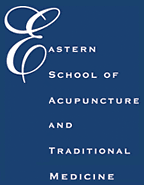Whether you accept it, avoid it or live somewhere in between, insurance coverage has become a defining issue for our profession. Patients increasingly expect to use their benefits, practitioners want to be compensated fairly for their time and expertise, and the system itself remains – at best – fragmented. The encouraging news is that coverage has expanded in meaningful ways. The challenging news is that reimbursement, across the board, remains inadequate.
Eastern School of Acupuncture Helps Students Make Ends Meet
 Julie Puretz, founder of the Eastern School of Acupuncture & Traditional Medicine, says with certainty, "It's expensive to go to acupuncture school." For that reason, when Puretz founded her school in 1997, she set out to find a way to offer students scholarship money to help defray the cost. Since 2002, the school has been offering students scholardships based on financial need, and Puretz believes this sets the school apart as one of a very few schools, if not the only school, to offer students scholarships.
Julie Puretz, founder of the Eastern School of Acupuncture & Traditional Medicine, says with certainty, "It's expensive to go to acupuncture school." For that reason, when Puretz founded her school in 1997, she set out to find a way to offer students scholarship money to help defray the cost. Since 2002, the school has been offering students scholardships based on financial need, and Puretz believes this sets the school apart as one of a very few schools, if not the only school, to offer students scholarships.
"We try to find the neediest among the applicants," said Puretz, an acupuncturist and educator from New Jersey. Puretz believes that her school, in Montclair, New Jersey, will benefit as much as the students themselves. "We are trying to do what we can to help students defray costs, and in doing so, we hope to attract a more diverse student population. We want to make this field accessible to many students."
Currently, the three-year course at the Eastern School of Acupuncture costs approximately $36,000, or $12,000 each year. The school is awaiting Title IV federal funding, which will open the door to federally funded student loans. In the meantime, however, Puretz saw the need to begin offering scholarships, the money for which comes out of the school's coffers. "Right now, we don't have the graduate population to start asking alumnus to give back to the school through scholarship drives and alumni fundraising. So our scholarship money actually comes out of our school's budget. While it's not much, it's something. We see this as an important part of our mission and hope that it equalizes the playing field so that more students can enroll in the school," Puretz explained.
Each applicant is reviewed by the school's board of directors. Not everyone who applies gets approved. "We have some students who have other assets such as homes," Puretz explained. "They may be cash-poor, but if they have other assets, those must be considered. We really try to find the neediest students and award them."
New Hope, Pennsylvania resident Maryann Smith is one of those fortunate recipients. "The money is helping me to fulfill a lifelong goal," she said. Not only is Smith trying to complete her career goals, but the mother of two is also going through a divorce and has sole custody of her children, one of whom is a minor. "My expenses are high because I have to provide child care for my nine-year-old son while I'm in school 16 to 24 hours a week," she said. Smith's commute is 90 minutes each way.
Smith, a certified massage therapist and first-year student, hopes that once Title IV loans are granted to the school, she'll be able to apply for loans to finish her education.
Anita Daniels, who commutes from Boston, says her scholarship money helps defray the cost of the travel. "It definitely helps to offset the travel expenses," Daniels said recently. Daniels, who is also a massage therapist, but hopes to change careers once certified in acupuncture, has also seen her income dwindle as she juggles school with fitting in her massage appointments. "While the scholarship money doesn't make up for lost revenue as a result of working fewer days, at least it helps defray some basic costs," she said.
Another program that makes the Eastern School of Acupuncture unique is its payment program. "We are again one of the few schools, if not the only, to offer a monthly payment program to our students. We really spend a lot of time trying to make acupuncture school accessible to as many people as possible," Puretz said. "It's good for our school and it's good for the profession."
The payment program allows the students to make monthly installments toward their tuition. "It makes it just a little more manageable for some students to pay monthly," Puretz said. "We also have some employment opportunities in our school and our student clinic. Students who want to work during their training may look into what we have available through the school. And, although we don't have a surplus of job openings by any stretch, as the school grows and attracts more students, we will have more work/study opportunities available."


